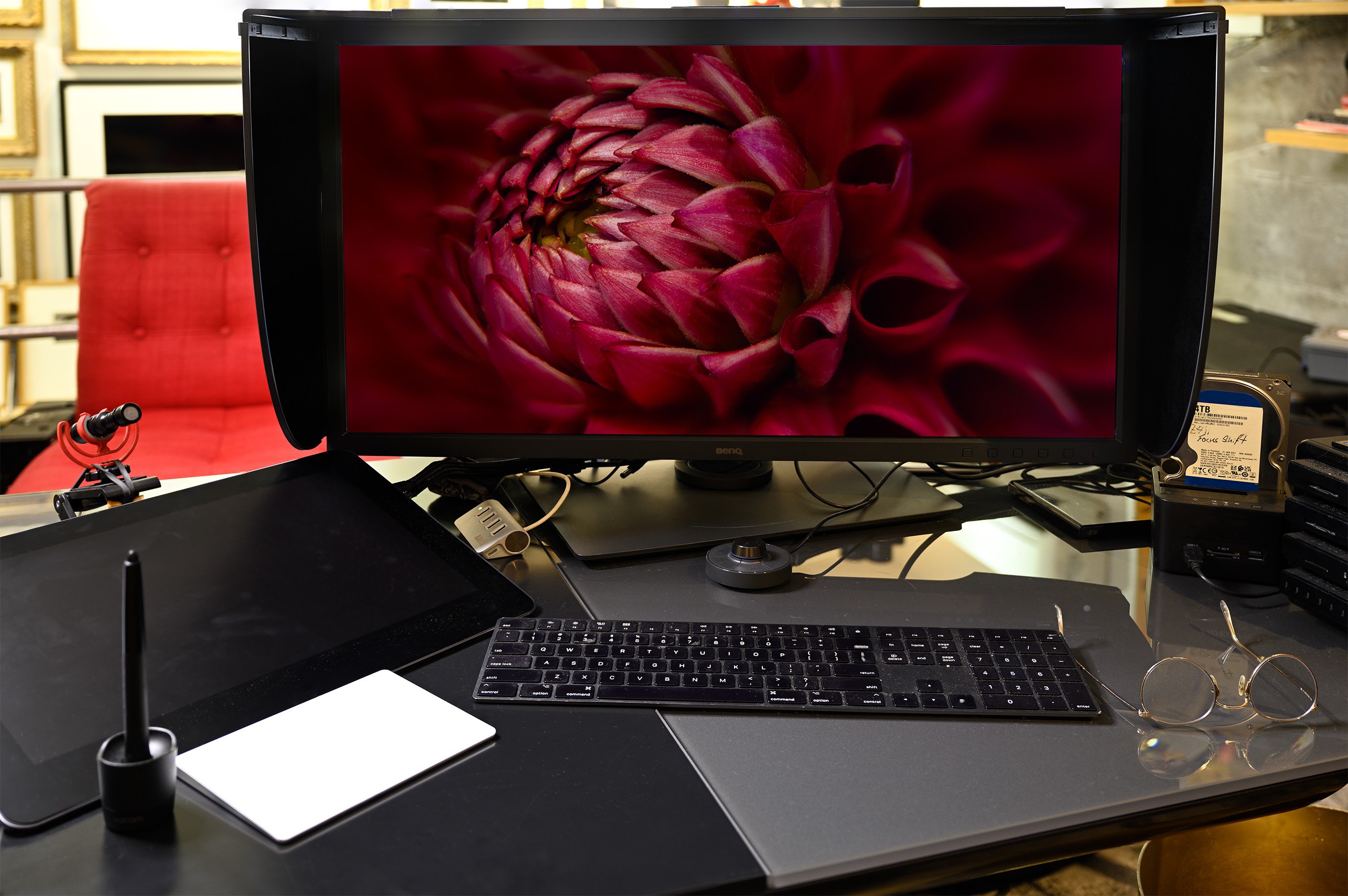


The eye perceives your personal reality. As a photographer, it is with the eye that I witness the world in such a way that when I click the shutter and both capture and am captured by the moment. The image that results holds a piece of me and the moment in which I found myself. My job is to move the viewer of my images the same way that I was moved; to make images in which you hear the wind, the laughter of a child, smell the fragrance of the flower or feel the power of a waterfall.
For me, the camera’s lens is my brush. The sensor is the canvas. The file is the sheet music and the final print is always the symphony.
I believe that the more you know about the tools you use, the better a visual artist you will be. I also believe that the weakest link in an artist’s world should be the artist. I never want my tools to be the reason an image is anything less than I wanted it to be. Since the eye perceives your personal reality, the monitor I use has to help me shape and reflect the reality that I photograph. And that is why the monitor I choose, and have chosen for the past six years, to see the soul and heart of my images and to use for approval color, is a BenQ - specifically the SW321C monitor.
The needs, requirements and demands of a digital visual artist, whether they are working with motion or still, have grown over the years to the point where they have converged. Still cameras are now more than capable of rendering 4K video and video cameras are capable of having individual frames extracted from them. The SW321C monitor is capable of handling the demands of both. As a still photographer, all the images that I post-process are done so with the intent of being made into fine art prints. The SW321C is at 4K resolution, which means that I can actually see what the fine details of the print will actually look like at the size I will print it. In addition, as well as having AQCOLOR Technology, second generation uniformity technology, the SW321C is equipped with an anti-glare/anti-reflective panel that offers me a preview that is much closer to the final print than other monitors afford.
But more importantly, it is the AQCOLOR Technology that gives the SW321C superior color fidelity. In the worlds of fine art and commercial photography, the worlds in which I live, the math of success is simple. Whoever controls the integrity of an image’s color wins. Regardless of whether it is the full spectrum of colors or if it is the chromatic grayscale (a black and white image derived from equal values of red green and blue). When you own the color, you own the image. When you own the image, you own the viewer’s eye as it looks at your image. Period.
What that means is that the SW321C is capable of delivering 99% Adobe RGB, 100% of sRGB and Rec. 709. It is also capable of rendering 95% DCI-P3 and Display P3. The monitor also has HDR technology that offers support for video formats HDR10 and HLG with a 16 bit, 3D LUT. Also, the SW321C has hardware calibration and GamutDuo capability. Lastly, the monitor is rated to perform at this level for 30,000 hours.
That is a lot of numbers and whizz-bang jargon, so let’s break that down.
Because I believe that the weakest link in an artist’s world should be the artist and not one of his/her tools, and because I never want to be limited by anything except my imagination, I use BenQ monitors in my studio and, when situations permit, in the field as well. My images would be a whole lot less without the many “mores” that a BenQ SW321C monitor brings to my party.
Landscape, Natural Photographer / USA

Vincent Versace is an internationally recognized pioneer in the art and science of digital photography.
Vincent’s passion for photography dates back more than four decades when, at the age of seven, his wedding-photographer uncle introduced him to the magic of the darkroom. Within two years, he had sold his first photo. Within ten, he had booked his first professional assignment.
Vincent’s work has been highlighted in American Photo, Popular Photography, The New York Times and many more other high profile media. He is also the author of the best-selling books.
His passion for natural light photography is manifest not only in his work but also through his role as a creative and technical leader, contributing to innovative breakthroughs across the entire digital image value chain.
Photography Website https://versacephotography.com/
Facebook https://www.facebook.com/vincentversacephotograhy